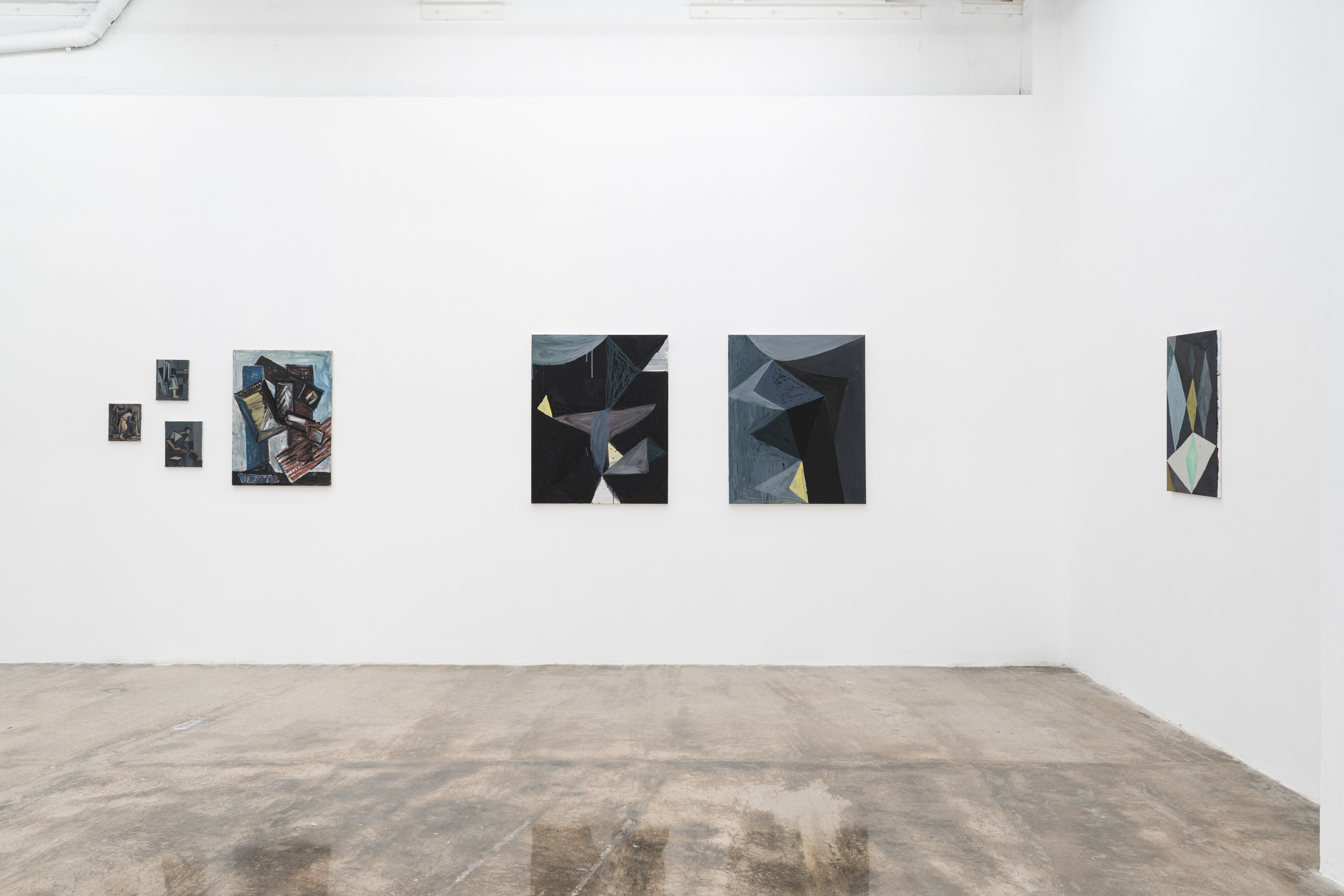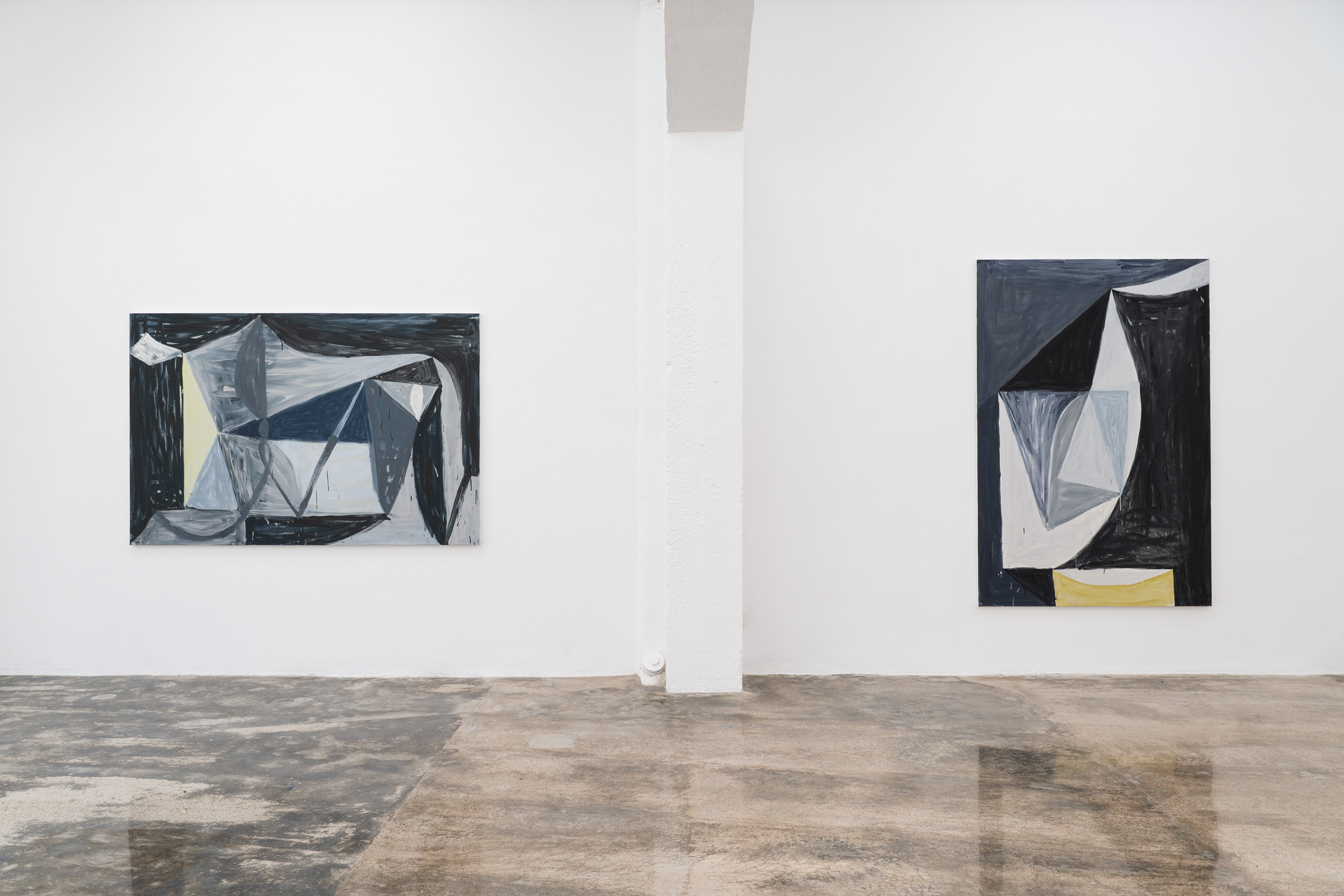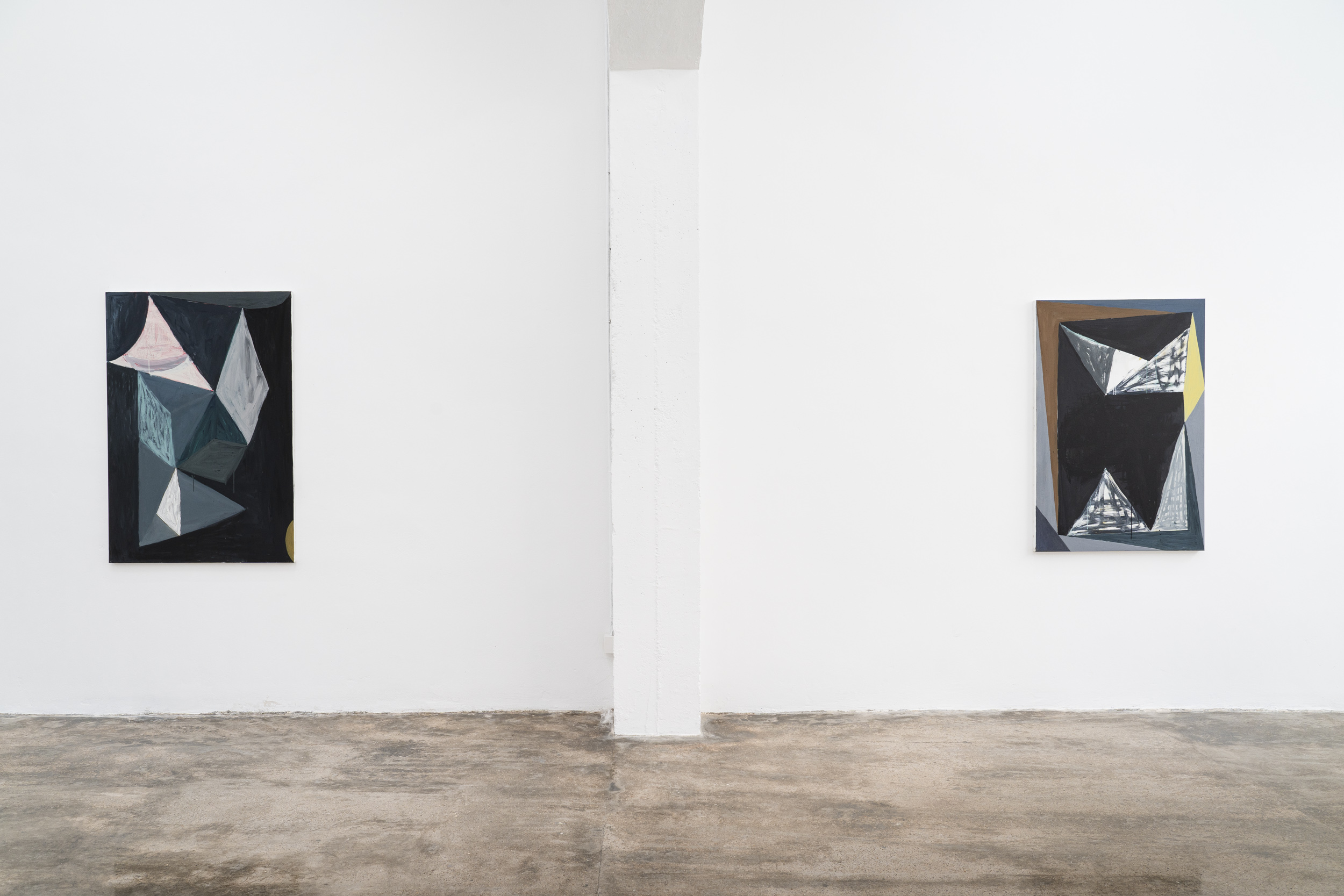ET FUGA | Art Palma Brunch
23.03 –– 31.05.24
02 - 07. 12. 2025 BAIT AND TACKLE
22.11.2025 –– 20.02.2026 EN FORMA | NIT DE L'ART
20.09 –– 14.11.2025 AÑO TRES | Art Palma Summer
05.06 –– 05.09.2025 Trazos y espacios | Art Palma Brunch
22.03 –– 30.05.2025 ARCOmadrid 2025
05.03 –– 09.03.2025 UNTITLED Art Fair Miami
04.12 –– 08.10.2024 FAIRY TALES
25.11.24 –– 24.01.25 SWAB ART FAIR 2024
03.10 –– 06.10 2024 GALAXY BALLROOM | NIT DE L'ART
21.09 - 15.11.2024 CAN ART FAIR IBIZA
26.06 - 30.06 2024 Space In Between | Art Palma Summer
06.06 –– 13.09.24 ARCOmadrid 2024
06.03 –– 10.03.24 MIENTRAS TU SUEÑAS
24.11.2023 –– 02.02.2024 SWAB Art Fair Barcelona (5-8 oct)
THE MELEE | NIT DE L'ART
23.09 ––10.11.2023 MALE MALE
23.06 ––15.09.2023 AMARILLO PÚRPURA - Art Palma Brunch 2023
25.03 –– 26.05 2023 True North
03.02 –– 17.03.2023 TERERÉ
11.11.22 –– 27.01.23 FLOOP
17.09 — 05.11.2022 Here We Go
09.07——02.09.2022
Galería Fermay is pleased to present Et Fuga, a solo exhibition by Eduardo Martín del Pozo (Madrid, 1974).
The work of Eduardo Martín del Pozo clearly draws from the fertile gestural tradition that appeared in Europe and the US in the second half of the 20th century. In that Europe there was also Spain, specially with those incredible experiments from the fifties such as Grupo el Paso and Cuenca, up until other more recent artists like the eternal Miguel Ángel Campano. Martín del Pozo makes this genealogy his own and applies a new logic onto it, one that considers every centimetre of the canvas as a battle ground in order to find that right brushstroke and make painting real. At first formalist, his work is however a repository of ideas and concepts that range from philosophy to Baroque music. The lyricism of his compositions is accompanied by a truly palpitant pictorial surface on which there is not only the represented final image but also those miraculous accidents that allow the artist advance in his approach to the medium. Del Pozo’s abstract vocabulary is quite generous combining references to other genres such as the still life and landscape and in case of certain works also flirting with spatial illusion, which subtly points to the work of the great masters of Baroque painting.
Et Fuga showcases the latest work of Del Pozo. If in the last years the artist has been refining his style toward a language primarily based on geometry and pure gesture, and colour has progressively been reduced to white and black — radically in his previous series Praeludium-, with this exhibition, by contrast, the artist aims to distance himself from such rigour by bringing back colour and gestural freedom. As the artist himself states, and others before him like Spanish artist Estaban Vicente, his body of work does not consist on unconnected projects but rather it is an ongoing and thorough exploration of the pictorial medium, which includes the investigation of the formal values as well as the expressive and emotional force inherent in painting. This is the reason why the title of the exhibition, Et Fuga, makes reference to that musical compositional technique, which Bach was very fond of, that it consists on a kind of ramification, or variation, through which the artist is able to pursue new paths of investigation that allow him to keep exploring questions that relate to the medium. While Eduardo maintains his faith in the formal composition, we also see how his most recent works are dominated by rather fluid brushstrokes and structures that, although continue to make use of geometric figures, they are also combined with softer forms, transparencies and drips. The struggle between formal contention and the pulsation of colour turns this new series of works in a kind of transition toward a more complex and nuanced position.
Continuing with the idea of the musical fuge, if we take each of the paintings as an independent voice, we see how a common denominator starts to emerge pointing to a thorough study of the practice of painting. The physical qualities of painting and the two-dimensional nature of the canvas are precisely the essential blocks through which the artist investigates colour, light or composition. In Et Fuga we see how the return to colour is made at to speeds. On the one hand, we see some pieces in which the black and grey are still predominant allowing
only certain manifestations of colour, and on the other, there are others in which chromatic masses take an evident prominence. This progressive invasion of colour is made at the expense of the compositional rigidity so present in Praeludium opening thus a more dynamic relation between the different elements that compose the pictorial plane. We find how the previous rigour and austerity are softened in favour of loose brushstrokes, and the opacity of the dark colours disappears in favour of transparencies. The result of this new series is a kind of lighter and more complex work that celebrates the artifice of painting through the heterogeneity of angles and the use of varied plastic means.
Eduardo Martín del Pozo’s body of work finds itself in the Spanish abstract painting tradition of the second half of the previous century and goes along other artists such as José Guerrero and Miguel Ángel Campano. This exhibition pays special attention to the figure of the latter, and the plastic and conceptual influence he had, and still has, on the work of Eduardo Martín del pozo. Both artists became friends and admired each other work ever since they met in Paris in 2005. Through the study of Campano’s work, Del Pozo realised not only that they both shared a common lineage, but also that there were certain common traits in their understanding of painting, and even also shared pictorial processes such as variation or repetition of certain motifs and specific topics. This looking back, to the classics, so to speak, also happened to Campano when in the 80s he immersed himself in the French painting tradition revisiting several artists such as Eugène Delacroix or Nicolas Poussin. This fixation took him to exhaustively study series such as Poussin’s The Four Seasons, and it was precisely through repetition, variation and the reduction of forms that he achieved his now iconic black and white geometric style. It is paradoxical that Eduardo is now undertaking the inverse path to colour and making use of the same conceptual tools in order to increase gestural freedom.
In Et Fuga we can see four small sized works that Miguel Ángel Campano’s family has kindly lent to the gallery. Such works belong to that moment in which Campano feverishly studied the work of Poussin and where we can see such aforementioned working methodology that led him to the reduction of forms —in this case focusing on the motif of Ruth and Booz. Eduardo Martín del Pozo also aims to exhaust the plastic possibilities of the certain motifs; while in that past there were plants or still lives (just like others before him such as Ellsworth Kelly or Giorgio Morandi) we see how Del Pozo’s recent work shows a special interest in composition, and more precisely in the idea of the plane. It is not so much about a specific figure or motif that he pretends to explore but rather the fitting of both forms and chromatic values. While works belonging to Praeludium are rather flat and extremely ordered, now we see a pulsation in which planes and forms are completely intertwined generating very productive dynamics and rhythms all along the surface of the canvas. Such active and affective relation between the formal elements take us to another characteristic trait in Eduardo’s work which has to do with the notion of time, in its various senses — time that goes through historical genealogies of which one’s part of, and the (performative) time that is required to create an artwork. It is also about the time embedded in the painting itself, that just like music, results from the combination of its components, and of course the time of each viewer to read the canvas.
Lastly, in the case of Et Fuga, space is also important. As the author of the catalogue text that accompanies the exhibition Pablo Pérez d’Ors states, “it is particularly appropriated that this exhibition happens here, in Palma, given that Mallorca has played a crucial role in the artistic and vital trajectory of Campano and also, albeit in fewer occasions but with a lot of intensity, in Eduardo’s as well”. In the mid 80s Campano established himself in Fornaltux, a little village in the Serra de Tramuntana, where he produced an important part of his artistic production.
D’Ors continues, “this encounter, or rather reencounter, is a wise curatorial decision since it shows shared interests, practices and ways of understanding painting of two friends”. Precisely, this solo exhibition of Eduardo Martín del Pozo not only shows his most recent work but it does it celebrating, in a subtle and intimate way, that relation of influence and mutual admiration between the two artists.
Eduardo Martín del Pozo (Madrid, 1974) lives and works in Madrid. He has exhibited in numerous exhibitions across Spain, France, Germany, The Netherlands, Italy or the US. His work has been shown in institutions such as Centro de Arte de Alcobendas , Museo de Santa Cruz de Toledo, Real Academia de Bellas Artes de San Fernando, Fundación Antonio Pérez (Cuenca), Fondation des États Unis (Paris), Cité Internationale des Arts (Paris), Centre de Création Contemporaine Usine Utopik (Tessy-sur-Vire), Fondation Le Corbusier (Paris). Recently he has participated in the exhibition On Music, curated by Markus Kersting -Raum MG 16 (Cologne, 2023)- or en Here We Go -Galería Fermay (Palma de Mallorca, 2022) and realised numerous solo exhibitions in F2 Galería (Madrid, 2021) and Luis Adelantado (Valencia, 2022). His work is part of public and private collections across Spain, France, Italy, Belgium, Mexico, US or Saudi Arabia such as Ministerio de Cultura, Patrimonio Histórico Artístico Español, Ayuntamiento de Valdepeñas, Colección Alicia Aza, Zuckermann Museum of Atlanta, Four Seasons Madrid, Saddle Madrid, Colección JLT and Colección Rucandio.
This exhibition is part of the official programme of Art Palma Brunch organised by Art Palma Contemporani and suypported by Consell de Mallorca, Ajuntament de Palma and IEB




